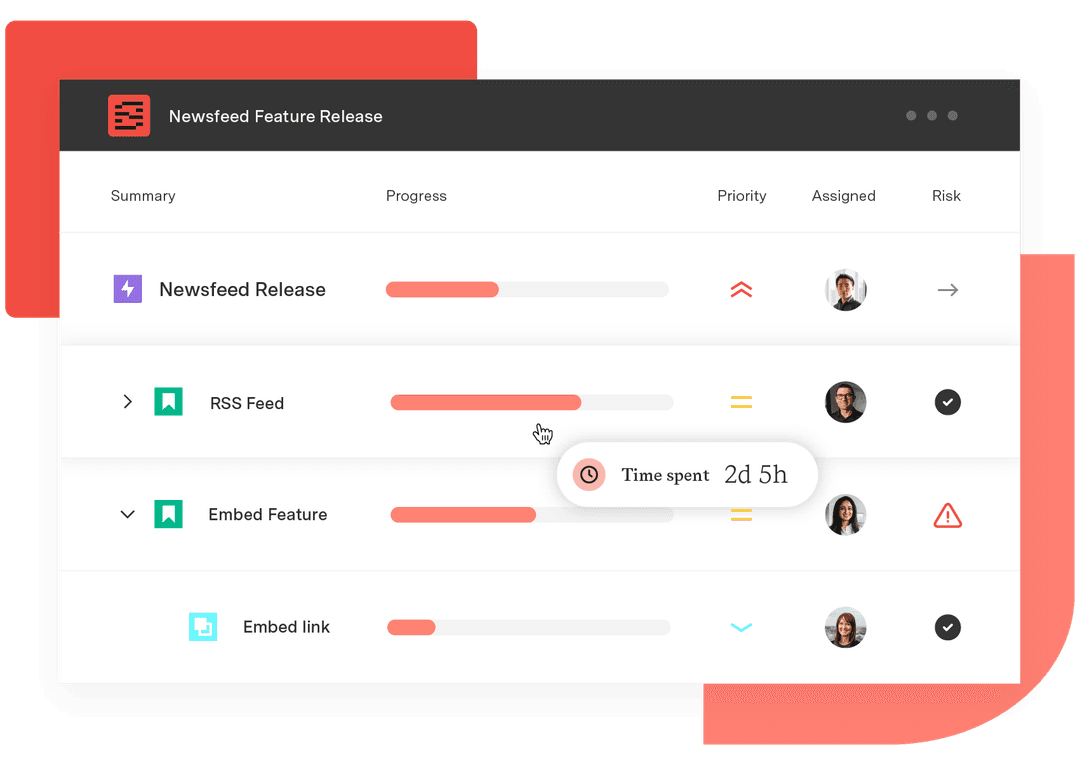Tackling the standing backlog: An agile approach
Tempo Team
In agile, the first requirement of success is effective backlog refinement.
Product managers and Scrum masters create a backlog of tasks that guide development team goals over a specified period. Managing a sprint or standing backlog ensures the development team completes tasks on time, addresses dependencies, and collaborates effectively.
Here are some strategies to help groom your sprint backlog like a pro.
What is a sprint backlog?
In agile, the simplest way to conceptualize the backlog is as the product development team’s to-do list, which they must complete within a set timeframe. However, several types of backlogs exist. The two most common are product and sprint backlogs. Some teams use “standing backlog” interchangeably with “sprint backlog.”
A product backlog is a catalog of deliverables, such as new product functions, that the team will implement over time as part of the product development roadmap. The backlog acts as a decision-making tool, helping to estimate, refine, and prioritize the development of future product features. It also ensures the team focuses on the most important and valuable tasks – fixing bugs or other issues critical to product evolution.
A sprint backlog functions similarly to its cousin. However, it doesn’t outline the product’s evolution over its lifetime. Instead, it lists and prioritizes action items for the development team to work on in the short term. In other words, it’s a detailed and specific checklist of tasks the development team must complete over a one- to four-week sprint cycle.
The team reviews the standing backlog daily, whereas the product backlog is assessed and updated during either the sprint planning meeting for the next cycle or at the sprint’s retrospective meeting after completion.
Using product and sprint backlogs together ensures the team prioritizes the most pressing and valuable tasks and helps them adjust their focus to meet long-term product goals.
How to use the sprint backlog: 5 tips
The sprint backlog may seem like a wish list of nice-to-have features stakeholders want to add to a product, but it’s more than that. It’s an instrument that informs product plans and development in the short term to ensure relevancy and longevity in an evolving marketplace.
Here are five ways to leverage the tool for long-term success:
1. Backlog grooming meeting
Stakeholders must review and organize tasks in the product backlog before planning sprint activities. Generally, the product manager brings together some or all of the following people:
Product owner
Scrum master
Product team representatives
Delivery team
Quality assurance (QA) representatives
Marketing, sales, or customer success representatives
Once assembled, the team begins identifying which user stories to pursue. To make that determination, they’ll ask questions like these:
Which items need to go into the next product release?
What is an essential addition to the product?
Which features complement each other?
How difficult is it to implement each new feature?
Participants will also perform essential activities:
Remove tasks from the backlog that aren’t presently relevant to team goals
Add and prioritize new stories based on current or changing customer requirements
Break down larger user stories into smaller tasks
Backlog grooming improves sprint planning and ensures the sprint backlog includes impactful work. At the same time, it solicits input from the entire group. This dialogue improves teamwork and encourages collaboration.
2. Sprint planning meeting
Now that the product backlog is updated, the entire Scrum team, including the Scrum master, product owner, and manager, can begin planning tasks for the next sprint iteration. During the meeting, the group will choose items from the product backlog to complete during the cycle, ranked according to priority. To help them prioritize, participants will ask:
What are the team’s goals for this sprint?
Which tasks from the product backlog will contribute to achieving these goals?
Which team members are available? Is anyone on vacation or leave?
What is the team’s capacity based on member availability?
Considering sprint goals and capacity criteria, which items should the Scrum add to the sprint backlog?
How confident is the team that they’ll accomplish the sprint’s goals?
A sprint backlog facilitates visualization of the Scrum’s activities throughout the schedule, ensuring adequate capacity and resources to complete the work. The team can then build a roadmap to illustrate big-picture planning.
3. Analyze the backlog during stand-up meetings
The daily stand-up meeting is another aspect of agile development that leverages the sprint backlog. A stand-up is a short meeting similar to a football huddle. It’s usually held at the beginning of the day, gathering the development team to discuss individual progress and identify blockers. Generally, team members answer three questions:
What did I work on yesterday?
What am I working on today?
What issues are blocking progress?
Stand-up meetings keep the team informed and connected, allowing them to coordinate their efforts for maximum impact. When someone faces a hurdle preventing task completion, other team members can offer advice or step in to support and problem-solve.
Stand-ups also build team spirit and camaraderie. Sharing individual work and success keeps everyone accountable and fuels excitement about the group’s contribution to the company’s success.
4. Scope management
Scope creep can be the bane of a product manager’s existence, distracting their team from high-value tasks to focus on a stakeholder’s pet idea. A sprint backlog mitigates the number of outside requests the team must handle and reduces their impact. Here are several more benefits of a standing backlog for scope management:
Outlines priorities: Scrum masters include tasks in the standing backlog based on business value, complexity, cost, and deployment readiness. This list establishes a clear scope for the iteration. If a new request doesn’t fit sprint priorities, there’s a solid reason to turn it down or save it for later.
Supports high-priority tasks: The sprint backlog includes clear task descriptions, instructions, requirements, and estimates, giving the team transparency and context for their work. Any new request must include enough information to justify prioritizing it over other tasks in the backlog. It cannot be a whim.
Provides clear goals: Establishing a sprint backlog requires leadership to define goals and clarify the team’s vision for the coming sprint. If an outside request supports the established criteria, it’s an acceptable candidate for inclusion based on a review of other critical factors like resource availability and timing.
Offers options: There must be a compelling reason to impose a new request on a team and disrupt their midstream work dynamic. With boundaries established by the sprint backlog, the team won’t waste time and resources on a feature that doesn’t add value to the product. It doesn’t mean the team will never address that request; it’s simply diverted into the product backlog for stakeholders to review during the group’s next backlog refinement meeting.
5. Prioritize
Timing often plays a role in a product’s success. By prioritizing and scheduling backlog items for when they’ll deliver the most significant ROI, the team can ensure the latest release has the maximum possible impact.
How Tempo can help you organize your sprint backlog
Successfully managing your development team’s sprint backlog ensures they remain focused on developing valuable features to keep the product’s audience engaged while maximizing profitability.
To accommodate an evolving marketplace and customer needs, you need a tool that builds flexibility into your backlog refinement and sprint planning processes. Tempo’s Structure PPM integrates with your existing Jira stack to optimize sprint planning by aligning tasks with your Scrum’s resources and capacity. Structure also enables status, milestone, and deliverable tracking, ensuring each sprint harmonizes with high-level organizational goals.














































